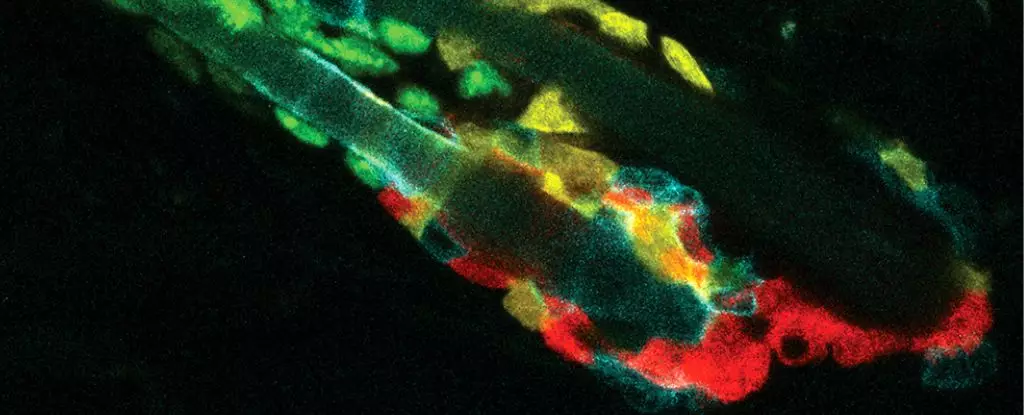The human body is a complex ecosystem where biological processes continuously unfold. One of the most fascinating aspects of this intricate system is the life cycle of cells. Every second, an estimated one million cells die in the body, a staggering statistic that raises a critical question: where does this cellular debris go? Recent research has unveiled a process reminiscent of cannibalism—living stem cells consume their deceased neighbors to ensure the health and stability of their environment. This unique cleanup mechanism highlights the delicate balance of life and death at the cellular level.
A study conducted at The Rockefeller University has shed light on this unprecedented method of cellular recycling. Researchers discovered that living hair follicle stem cells (HFSCs) have an innate ability to recognize and consume dying cells within their vicinity. This behavior occurs through the action of two specialized receptors that respond sensitively to specific biochemical signals. According to lead researcher Katherine Stewart, these receptors are tuned to the ‘odors’ emitted by both living and dead cells, allowing HFSCs to distinguish between healthy neighbors and those in distress.
Stewart notes that this mechanism is crucial for preventing unnecessary inflammation, which could arise from a prolonged immune response. When HFSCs efficiently clear out dying cells, they not only protect their local environment but also preserve their own functionality, crucial for the long-term maintenance of the hair follicle.
The research team focused their investigations on mouse models, particularly examining the behavior of HFSCs during the later stages of life. Past research had already established that when extensive cellular death occurs in the hair follicle, certain cells in the outer sheath take on the role of cleanup crew. However, the new study turned attention toward what happens when the vital stem cells themselves face mortality. The findings revealed an unexpected dynamic: HFSCs were the primary responders to their own demise, acting quickly to consume their neighbors before immune cells, like macrophages, could initiate their cleanup duties.
This discovery emphasizes the lost potential for rapid cellular communication among stem cells, which seem to prioritize the welfare of their community. The ability of HFSCs to intervene in this manner suggests a sophisticated layer of self-governance within stem cells that contributes to their overall resilience.
At the heart of this fascinating cleanup process lies a pair of dynamic receptors that effectively serve as switches controlling the consumption of dead cells. One receptor reacts to a “find me” lipid signal emitted by a dying cell, while the other is engaged by retinoic acid produced by healthy cells. This orchestrated signaling allows HFSCs to kickstart their cleanup operation upon detecting cell death while ensuring they halt the process when no corpse cells are present.
Stewart describes the elegance of this mechanism, emphasizing its simplicity and efficiency. When the waste is cleared, the signals indicating distress fade away, leaving only the retinoic acid from healthy cells to promote regular stem cell functions. This finely-tuned system illustrates the complexity of intercellular communication and coordination necessary for maintaining tissue health.
While the study primarily concentrated on hair follicle stem cells within mice, the authors speculate that this rapid detection and consumption of dead cells may extend beyond hair follicles and into other tissues across mammalian bodies. If successfully confirmed through further research, this concept could revolutionize our understanding of cellular dynamics in health and disease.
The implications of this work are profound. Improved knowledge of how stem cells maintain their environment may contribute to advances in regenerative medicine and therapies aimed at various diseases, particularly those involving cellular degeneration or dysfunction.
The intricate interplay between life and death at the cellular level underscores the remarkable adaptability of living organisms. As research continues to unravel these secrets, we find ourselves not only learning about the mechanisms of cellular life but also uncovering potential paths for scientific innovation that could enhance human health and longevity.

Leave a Reply